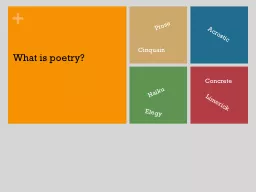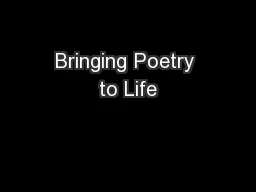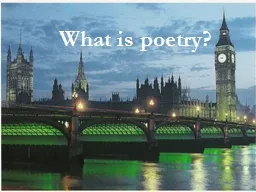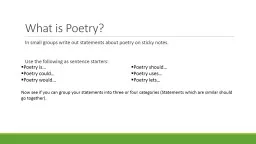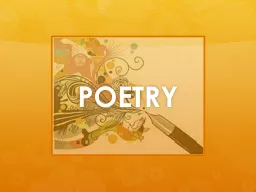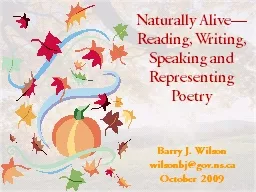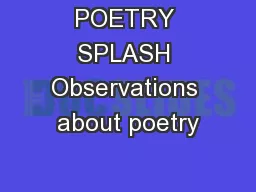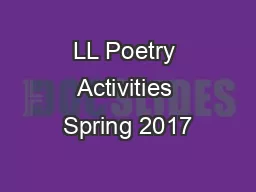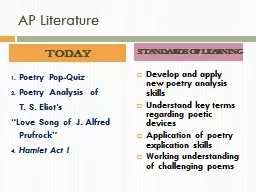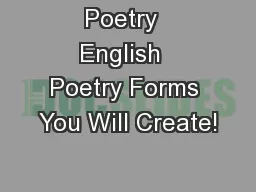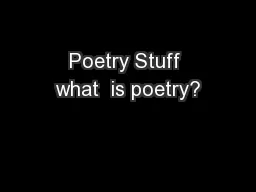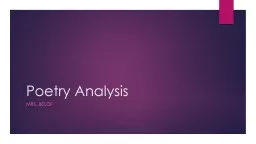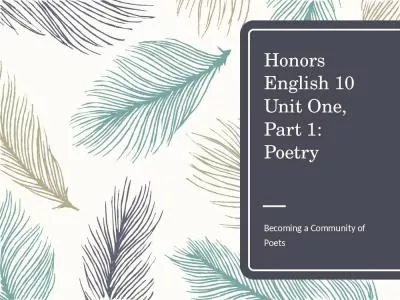PPT-Why do we read and write poetry?
Author : trish-goza | Published Date : 2019-11-09
Why do we read and write poetry Video clip 1 https wwwyoutubecomwatchvomveFR2hmg Video clip 2 https wwwyoutubecomwatchvgQU3EphIpMY Elements of Poetry Poetry is not
Presentation Embed Code
Download Presentation
Download Presentation The PPT/PDF document "Why do we read and write poetry?" is the property of its rightful owner. Permission is granted to download and print the materials on this website for personal, non-commercial use only, and to display it on your personal computer provided you do not modify the materials and that you retain all copyright notices contained in the materials. By downloading content from our website, you accept the terms of this agreement.
Why do we read and write poetry?: Transcript
Download Rules Of Document
"Why do we read and write poetry?"The content belongs to its owner. You may download and print it for personal use, without modification, and keep all copyright notices. By downloading, you agree to these terms.
Related Documents

